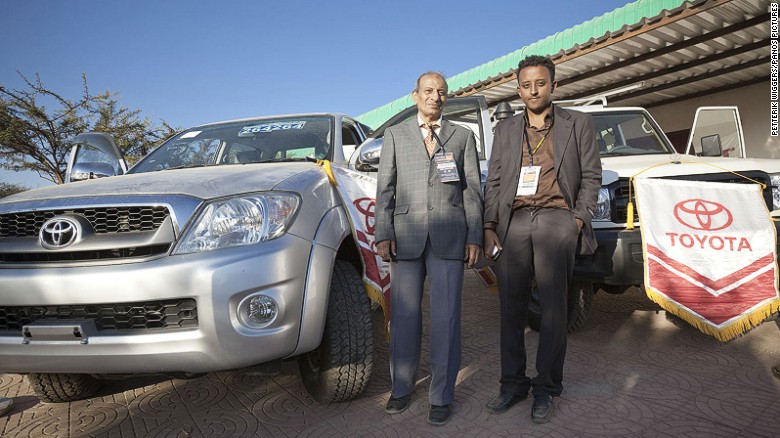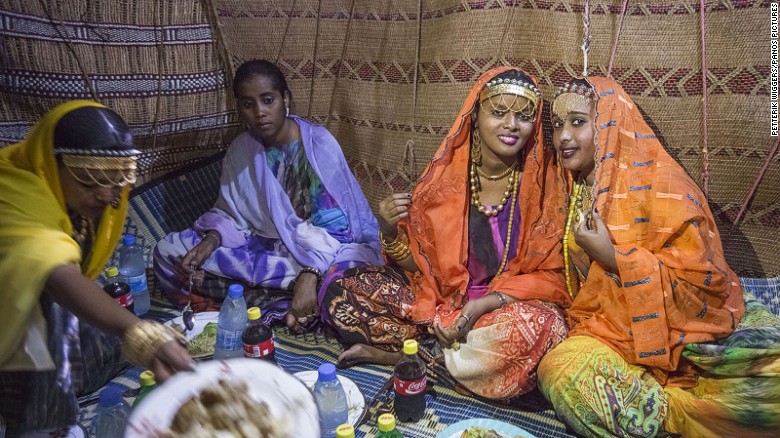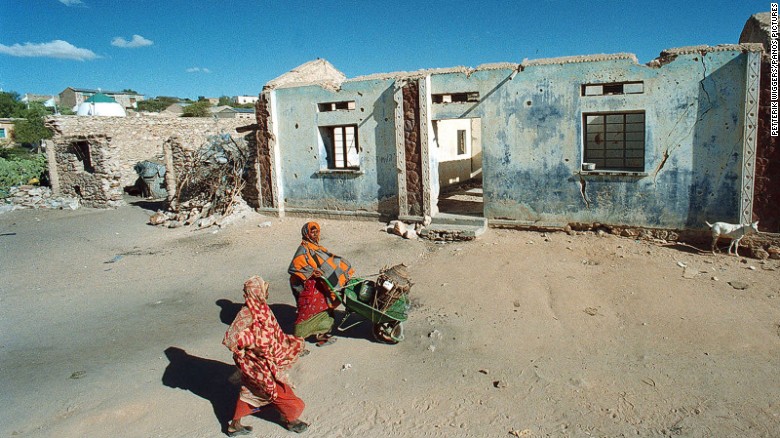
This could have something to do with it being the capital city of a country that in the eyes of the rest of the world doesn’t exist: Somaliland.The international community hasn’t recognized this would-be nation-state since it claimed independence from Somalia to its south in 1991.
But Hargeisa’s boisterous, welcoming inhabitants don’t let global politics get them down.
Their sun-blasted city is reinventing itself with or without international recognition.
Hence the colorful contrasts among its 800,000 residents.
Donkey carts jostle for road space with smart 4x4s.
Noisy telecommunication stores burst with activity one moment then empty in response to the call to prayer from mosques the next.
Goats and sheep share streets with Somaliland woman in bright kaftan dresses, clan elders, businessmen and trendy teenagers from the diaspora.
“There’s a buzz about Hargeisa that’s unencumbered by the stigma of being ‘Somalia’ and ‘an unsafe place to visit’ as preconceived by many people,” said Mark Rowlatt, a 56-year-old traveler passing through Somaliland during a world tour.
City in flux
 It’s a city in flux, where formal Islamic culture — many women are veiled, and alcohol is prohibited — exists alongside a mishmash of chaotic street market commerce and more modern glass-fronted office buildings, trendy cafes and air-conditioned gyms.
It’s a city in flux, where formal Islamic culture — many women are veiled, and alcohol is prohibited — exists alongside a mishmash of chaotic street market commerce and more modern glass-fronted office buildings, trendy cafes and air-conditioned gyms.
And what this young city lacks in striking historical architecture it makes up for in ambiance and a sense of exploration.
The central market below the main thoroughfare of Independence Road contains a warren of tight lanes hiding everything from perfume, clothes and electronic goods to tinned foods, fruits, vegetables and pyramids of dazzlingly colored spices.
Turn one corner and your nose first lets you know about the tight walkway flanked on both sides by tables covered in mounds of fresh red meat among which women squat and swish away flies.
On the southeastern outskirts is the open-air livestock market, where every day hundreds of camels, goats and sheep are traded.
Behind frothing male camels squaring off to each other, silhouetted in the distance are two adjacent triangular mountains, the so-called breasts of Sheba.
Fish fans are well catered for with Somaliland’s 850 kilometers of coastline providing ample stock to Hargeisa’s restaurants.
A generous portion of fish steak and rice goes for about $3 — best enjoyed with the spicy red powder locals like to have with it.
Back from the brink
Then there’s the deliciously sweet milky Somali tea brewed in great vats at what seems like every street corner.
With a piping-hot glass costing a mere 1,000 Somaliland shillings ($1=7,000 Somaliland shillings), a liking for this beverage can easily develop into a new addiction.
In Hargeisa it’s not just the tea that’s hot.
After lunch, at around 1.30 p.m., streets empty as people retreat from the heat for an afternoon siesta.
Come 4:30 p.m. the city wakes up, the streets fill and the volume from traffic and chattering, haggling voices continues to rise.

Hargeisa might be the capital of a country that technically doesn’t exist, but after a civil war in the 1980s the city barely existed in reality.
“It was totally destroyed — there was just rubble, waste,” says Saeed Mohamoud who works with Horizon Institute, a local organization helping communities transition from underdevelopment to resilience and stability.
On the walls of the Oriental — built in 1953, it’s Hargeisa’s oldest hotel — are photos of the building, bullet-ridden and half demolished during the civil war.
But next to these are also new posters depicting Somaliland’s beaches and historic sites under the hopeful banner: “Wonderful Somaliland — The Newest Tourist Destination in Africa.”
Remarkably safe
Much of the construction in Hargeisa has been funded by the Somaliland diaspora, pitching in as Somaliland has had to go it alone.
This can-do attitude against the odds gives the city and its inhabitants much of their animated charm; and explains why locals are so pleased to meet unexpected foreign visitors.
“The people are extremely welcoming, with a vibrancy and optimism about the state functioning well enough to allow people do their business,” Rowlatt said.
Somalilanders are not shy — walking down Hargeisa’s streets visitors will likely encounter numerous questions about where they are from.
Queries are often followed by friendly entreaties not to forget that they are in the one and only Somaliland, and to tell others about it.
Hargeisa is remarkably safe for foreigners, in spite of all the negative associations with Somalia.
Visitors can sit at ease beside a busy street drinking a cup of Somali tea.
That’s not to say there aren’t problems.
With the international community refusing to recognize Somaliland’s independence, its economy remains cut off from large-scale international assistance and global financial systems.
Poverty is widespread and swathes of young men lounging on Hargeisa’s streets testify to chronic unemployment rates of up to 75%.
Meanwhile, concerns are being voiced about stricter Islamic customs increasingly influencing society.
For now, though, tourists taking their government’s travel advisories with a pinch of salt can visit Hargeisa in relative safety.
The city also serves as a good base from where to take in Somaliland’s other attractions, including some of the world’s oldest rock art, found in the Las Geel caves 50 kilometers from the city.
By the end of a trip to Hargeisa, the visitor is left in little doubt: this is a city determined to stake its claim on the world map.
By James Jeffrey for CNN




























